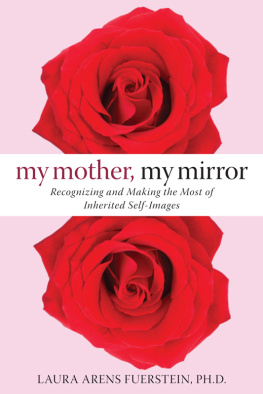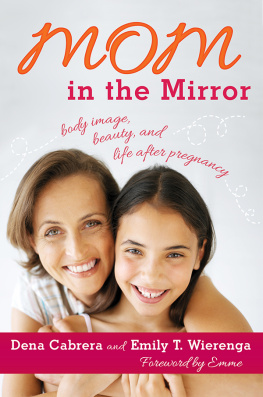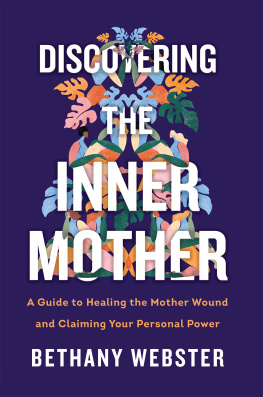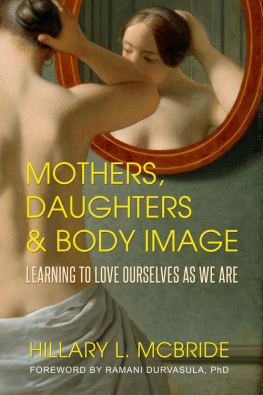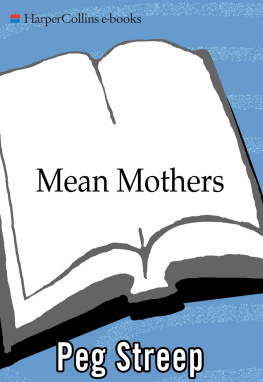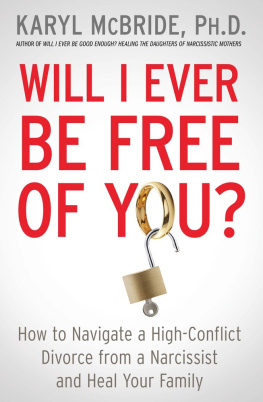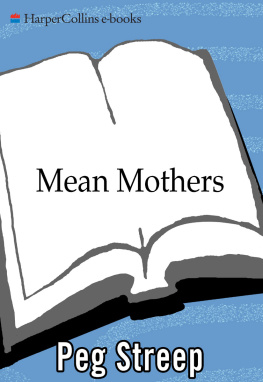Acknowledgments
This book and I were nourished by the support, inspiration, time, talent, and wisdom of many incredibly caring people. I am so deeply grateful to them.
Thanks to my family members for all the ways they have cared for me. Those deceased are Arthur Arens, Ruth Arens, Lillian Kutlow, and Joseph Weiss. I thank my other family members for always being there and rooting for me throughout the development of the book, from preconception to birth: Robert Arens, Jeannette Aronow, Carol Fuerstein, Millie Gold, Bobbi Lewis, Harvey Lewis, David Lewis, Dina Lewis and the rest of the Lewis family, Mally Netter, and Sandi Rudin.
Thanks to Herb Strean, my teacher, mentor, and friend, now deceased, who validated and inspired me and sparked my writing career.
Thanks to the following friends and colleagues: Carol Lefelt provided her steady support, insight, and teaching talent to help me find my voice and gain the courage to use it. The prowess, expert counsel, and encouragement of my agent and friend Britt Carlson produced wonders. My editor, Melissa Kirk, believed in me and the book and made it happen. All my other editors at New Harbinger generously gave me their time and the rewards of their efforts. Heather Mitchell, my literary agent, graciously offered her treasured insights and kind presence. Charles Salzberg supported me and freely provided me with his expertise and wisdom. Lorraine Gallagher, Ed Lowenstein, Mona Phillips, and Nina Williams formed a primal core of sustenance, validation, clarity of vision, and valuable feedback on the many drafts they read, frequently on the spot. Susan Berlin, Ellen Deck, Kay Fracher, Marc Geller, Daniel Goldberg, Marjorie Gutman, Paula Warhaftig, and Andrea Zanko sustained me with a limitless flow of encouragement, treasured input, and an unfailing belief in me. Janet Black, Cris Grapa, Joelle Hofbauer, and Linda Yellin bestowed me with their excitement for me, their creative insight, and their invaluable responses to drafts, often at a moments notice. Nancy McWilliams graciously gave her precious time and kind support. Susan Gutwill warmly reached out and cheered me on. Bill Berlin supplied me with valued feedback and introduced me to the viewing audience. Al Shire offered his unfailing kindness and encouragement through the years. Carol Tosone sparked my desire to write a book. Arlene Litwack bestowed me with her abiding positive influence.
Thanks to Carmen Crea Jr., Fran Lee, Miriam Libove, Rabbi Bennett Miller, Audrey Napshen, Janice Victor, and Valeri Weidmann, who generously reached out to me with their support.
Thanks to Peter Skolnick, Joel Stein, Nina Willdorf and Bunny Wong, who freely shared their time and expertise.
Thanks to old and new friends for supporting me and allowing me to blab about the book at various developmental stages: Dee Anderson, Laura Arrue, Sharon Atlas, Addie Baughman, Shelley Block, Ruth Bowers, Evie Braun, Joe Braun, Jerry Carlin, Mark Chernin, Hillary Corburn, Gene Corburn, Karen Dwyer, Tamesin Dyas, Art Factor, Jane Factor, Jeff Fracher, Dave Gallagher, Marjorie Geller, Susan Goldman, Julie Green, Mindy Greenstein, Warren Grover, Beatrix Hamm, Greg Hamm, Elaine Herzog, Greg Herzog, Carol Heydt, Bob Hill, Cindy Hill, Ken Hyman, Tom Johnson, Susan Jurish, Myra Klein, Steven Lefelt, Carol Lerner, Neil Lerner, Louise Levine, Murray Levine, Randy Levy, Barbara Littman, Len Littman, Judith Logue, Ross Macdonald, Sheryl Magaziner, Dennis Marshall, Rita Marshall, Mitchell May, Elizabeth McCandlish, Bob Mollinger, Nynfa Mueller, Richard Nurse, Jay Offen, Jerry Offen, Larry Perfetti, Lori Petrusky, Jan Press, Bob Raymond, Ron Reich, Peter Richman, Lanie Rockman, Andy Rockman, Pat Rockman, Alan Rockoff, Joy Rockoff, Penny Rosen, Anna Ruach, Wendy Saiff, Beth Bass Ehrenworth, Lenore Schiff, Helene Schwartzbach, Denise Sedehi, Rebecca Sedehi, Cathy Siebold, Sandra Sinicropi, Shawn Sobkowski, Howard Stein, Ruth Stein, Beth Stuckey, Kay Tsurumi, Stephen Warhaftig, Marsha Wasserman, Susan Weltman, Judy Wimpfheimer, Kathleen Winrow, Suzie Wise, and Lisa Zablocki.
Thanks to my Wednesday-morning study group membersWendy Eisenberg, Maureen Hudak, Laurie Martin, Judi Oshinsky, Nancy Robins, and Nancy Schleyfor their part in creating the texture and fabric of the book. They steadily cheered me on, courageously revealed their inner processes, and heightened my knowledge of myself.
Thanks to my sons, Michael and Eric, whose unconditional love sustained me throughout my journey. They openly showed their steady belief in me, offered their unerring insights about me, and bestowed me with their much-needed humorall while dealing with having a mother who is also a therapist and asks her kids (perhaps one time too many), So how does that make you feel?
Thanks to my husband, Mark, for nourishing me in measureless ways throughout the long, absorbing process of writing this book. The best I can do is offer glimpses of what he gave me: a limitless flow of support, a clarity of vision, a breadth of wisdom, an untold patience, a magical way of producing a countless number of half-full glasses, and a willingness to drop everything to read yet another draftall this, while meeting the challenge of being married to a woman who is both a therapist and a writer.
Finally, thanks to all my patients through the years, for giving me the privilege of having a part in their lives, and for revealing their most deeply hidden truths to methe colorful threads that formed the tapestry of this book.
Appendix
Suggestions for My Mother, My Mirror groups
You may find it helpful to start or join a group of women who are also working to shift their view from a carnival-mirror self-image to a more accurate self-image. Below are suggestions for a book group, and a creativity group based on themes from My Mother, My Mirror. They include ideas for topics to focus on, discussion questions to ask, and books to read. For further ideas or information, see my website, www .mymothermymirror.com.
My Mother, My Mirror Book Groups: New and Established
- Read My Mother, My Mirror in parts. While reading each part, keep key concepts in mind for discussion afterward, such as those listed below:
Part I: Truer self-image, distorted self-image, mother-image, freer self, thwarted self, hug cycle, boomerang cycle, rebel modeling, Narcissus, Echo daughter, mind-body moments, trigger events, fantasy, unconscious, watersheds, finding yourself lost, symptoms.
Part II: Exploring; stepping into Mothers shoes; sifting out; not-loss experience; uncovering; letting it be; plumbing the buried anger, love, or sadness.
Part III: Blending, pinpointing, Zen focusing, homing in, Rapunzel mother, Rapunzel daughter, stuck state, mindfulness.
- Use Questions for Reflection and Reading Touch Tools at the ends of chapters and in The List, later in this appendix, as a starting point for discussions.
- As a springboard for discussions, identify yourself and your childhood mother in the mother-daughter archetypes of celebrity women and their mothers in chapter 4.
My Mother, My Mirror Creativity Groups
The group might alternate the following activities from one month to the next, or stay with an approach and see where it takes the group.
Spark the Creative Experience
- Read: My Mother, My Mirror, and use Questions for Reflection, and Reading or Writing Touch Tools to open up discussions. Collect ideas in a group journal.
- Read: The Artists Way, by Julia Cameron (1992). Follow the tasks suggestions at the ends of chapters that most evoke your creative feelings.
- Hear music: Listen to musical recordings that stir feelings from the past while youre engaged in a creative activity.

